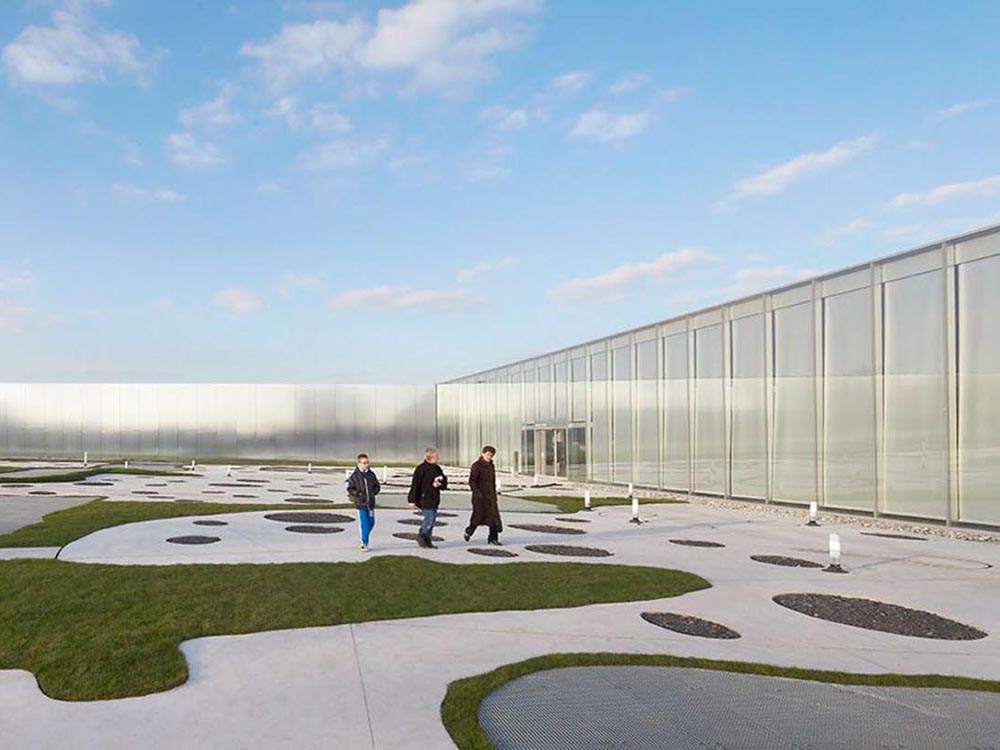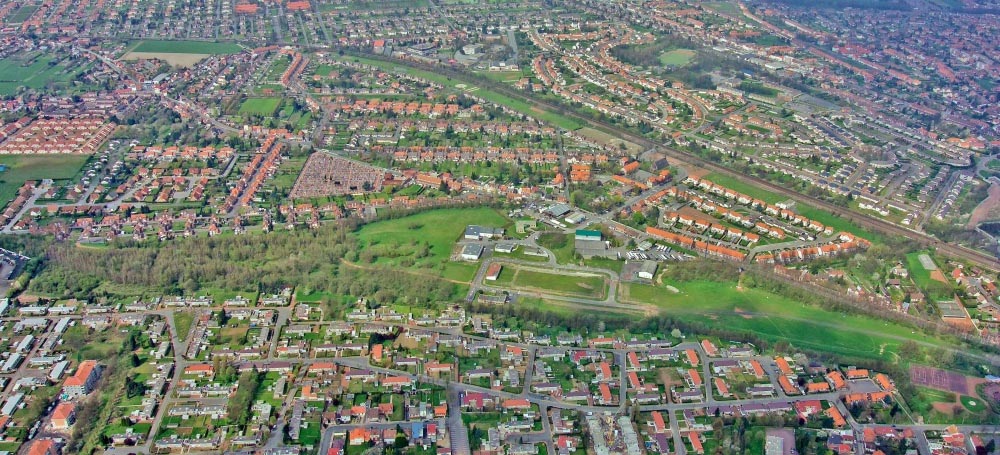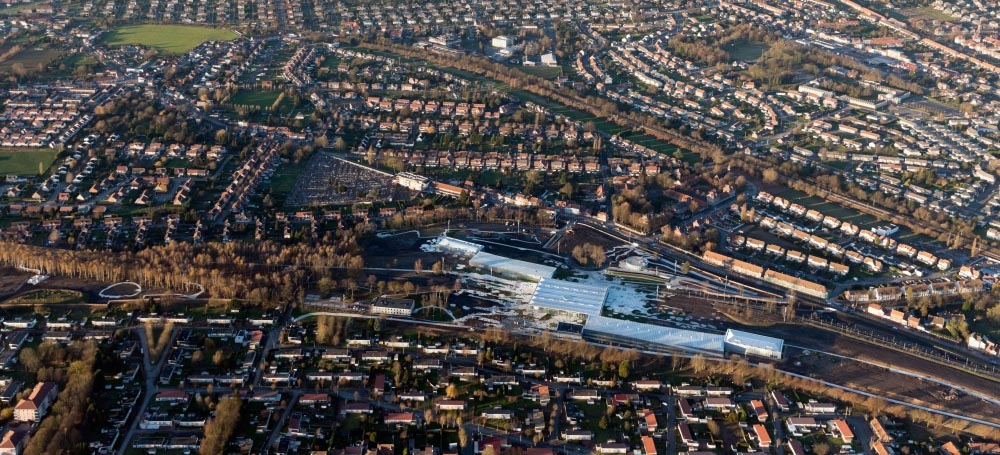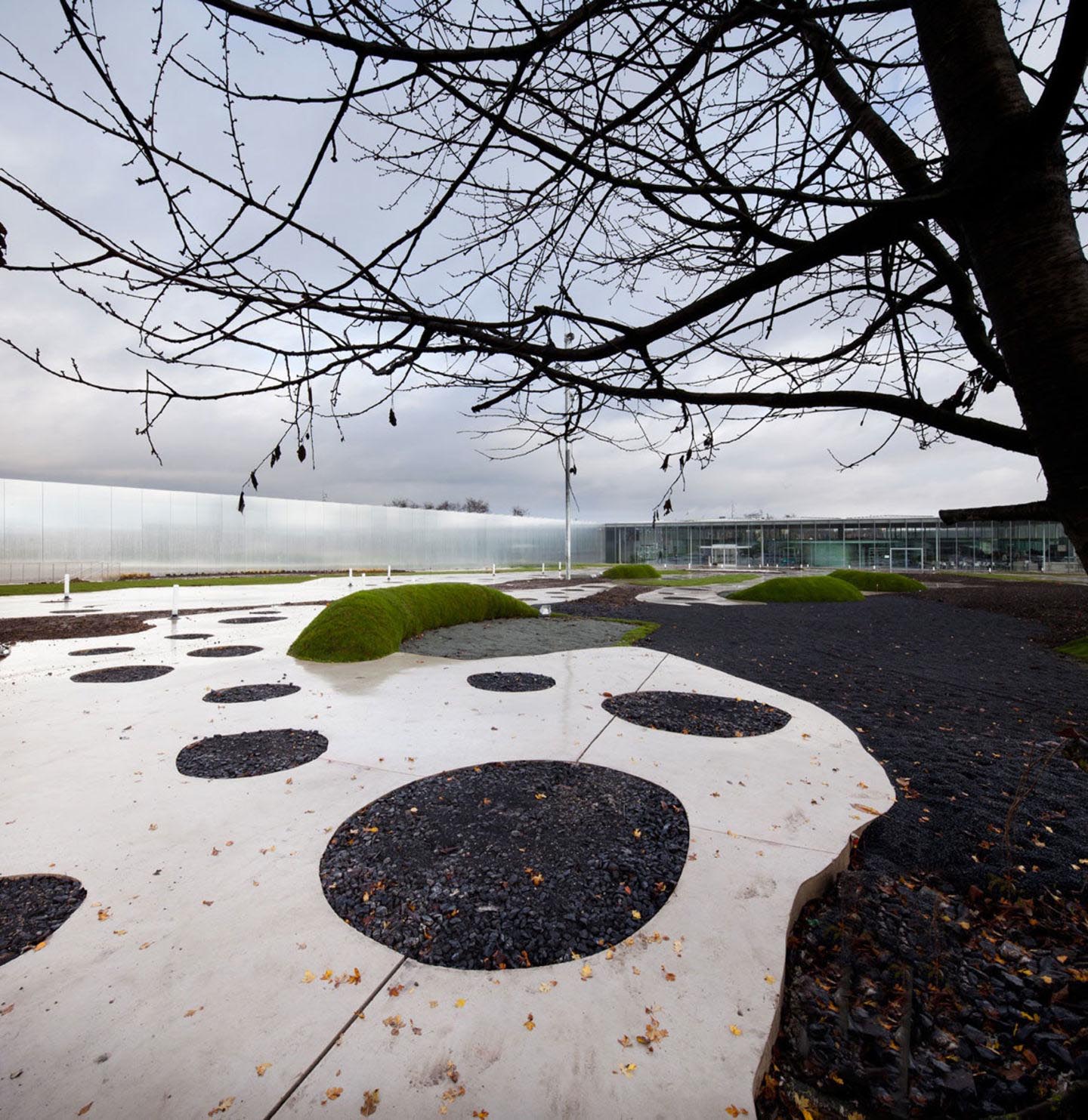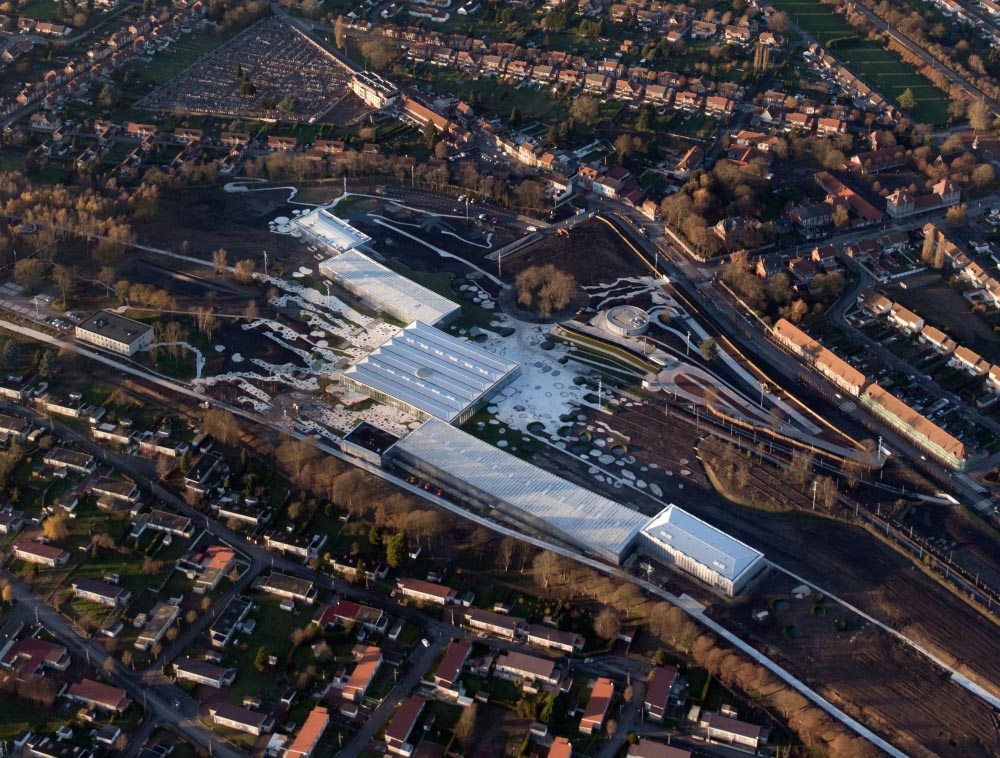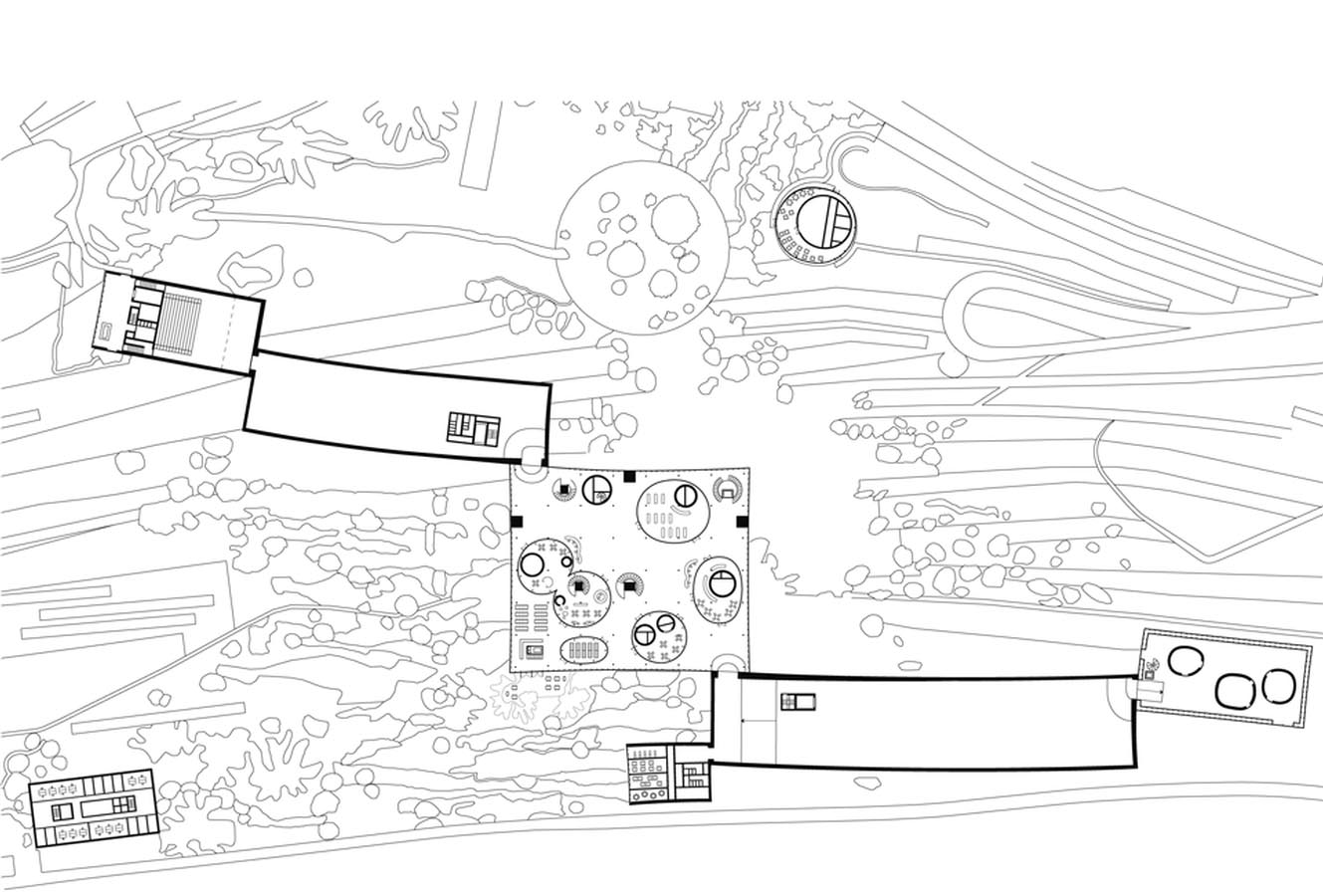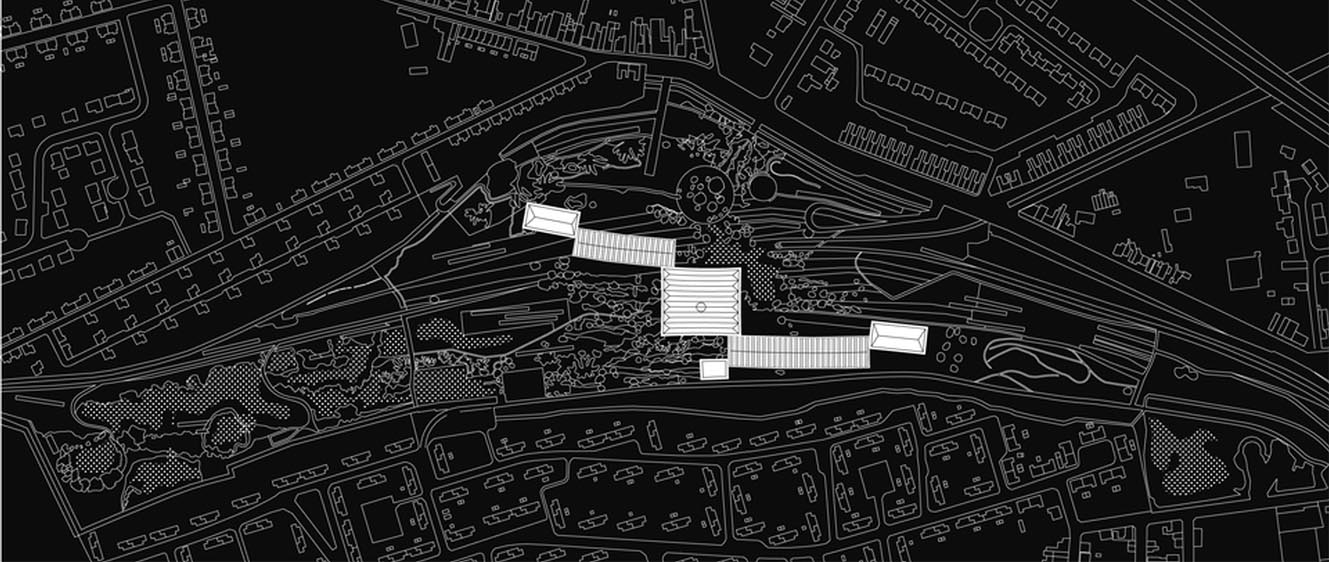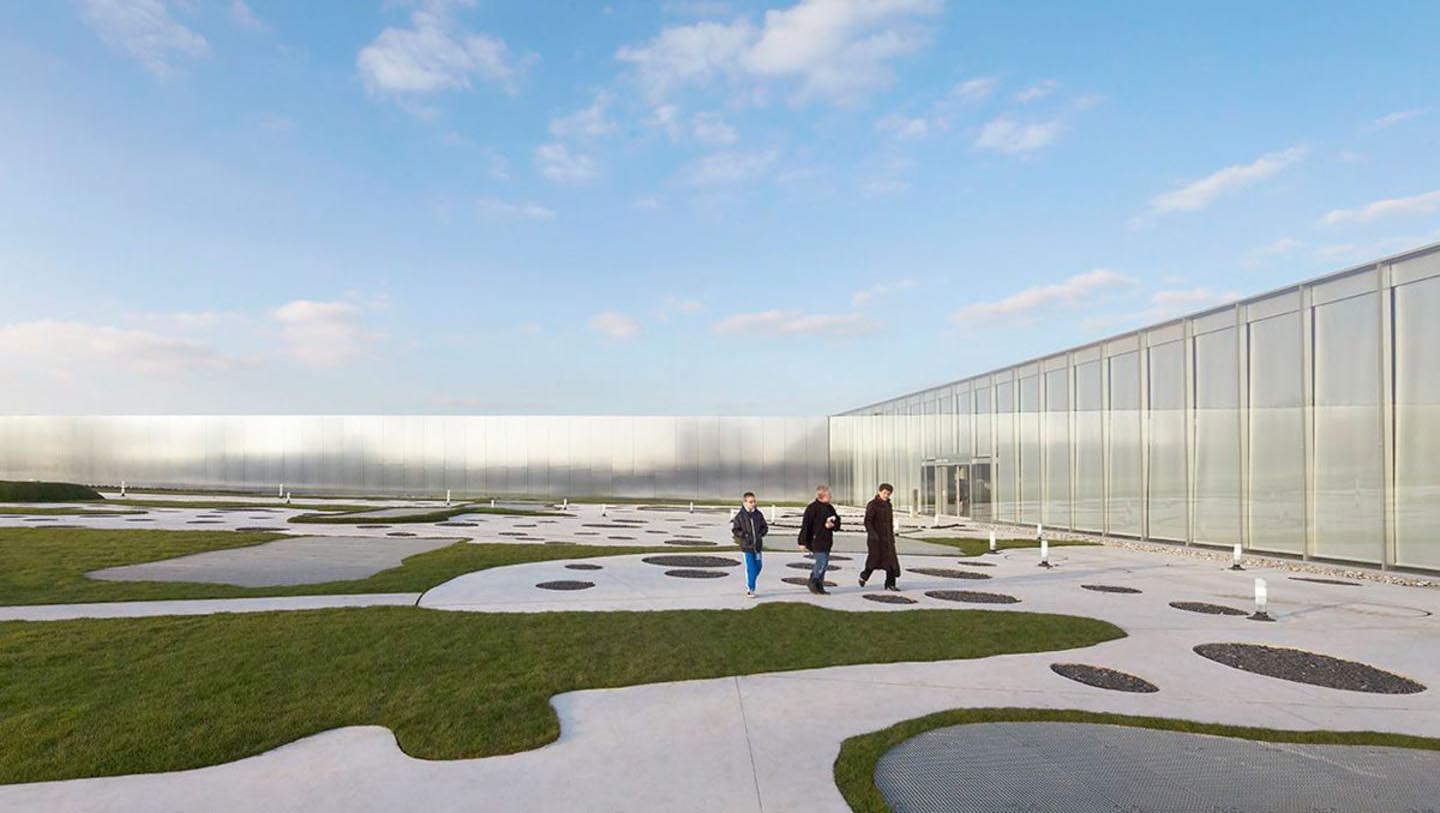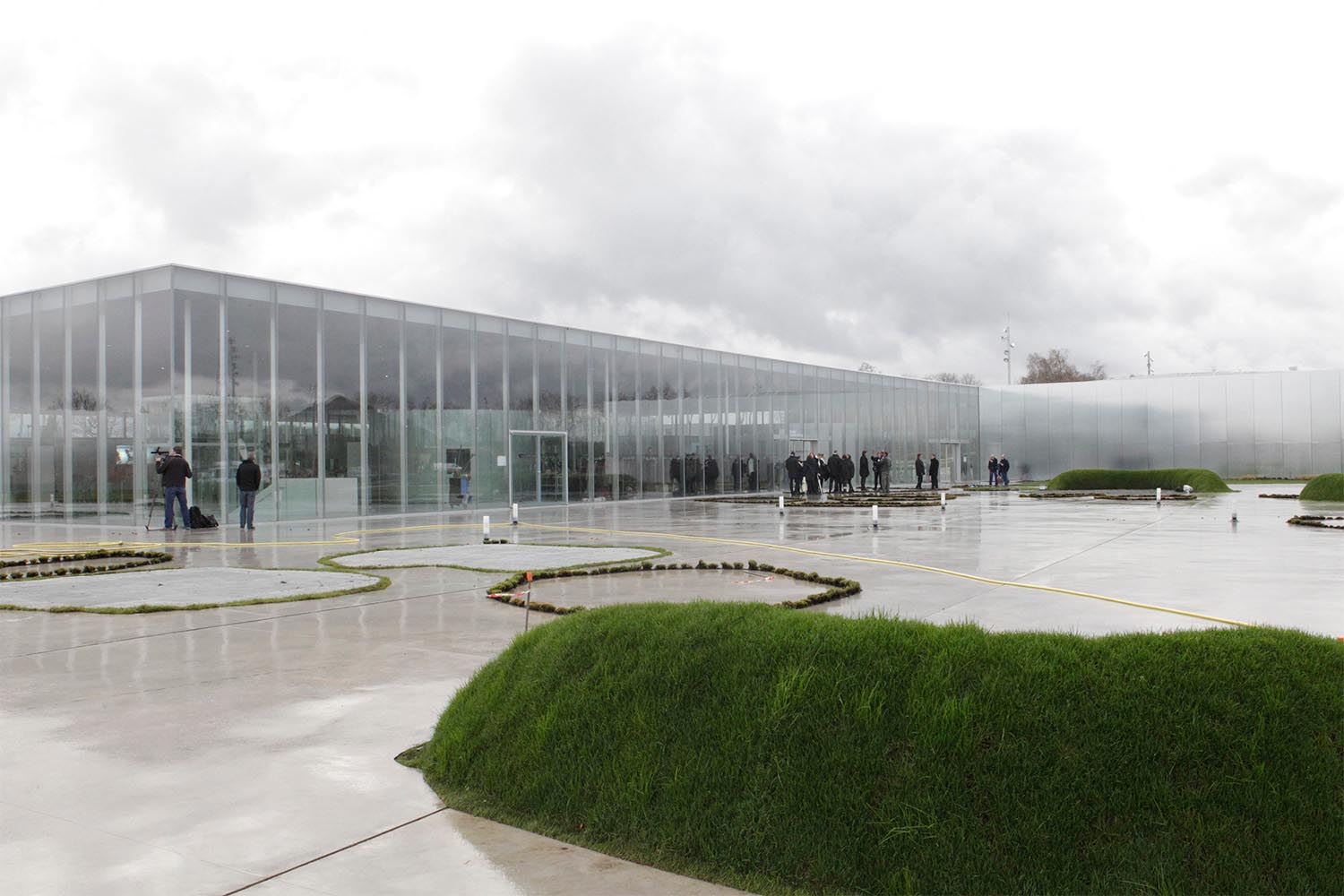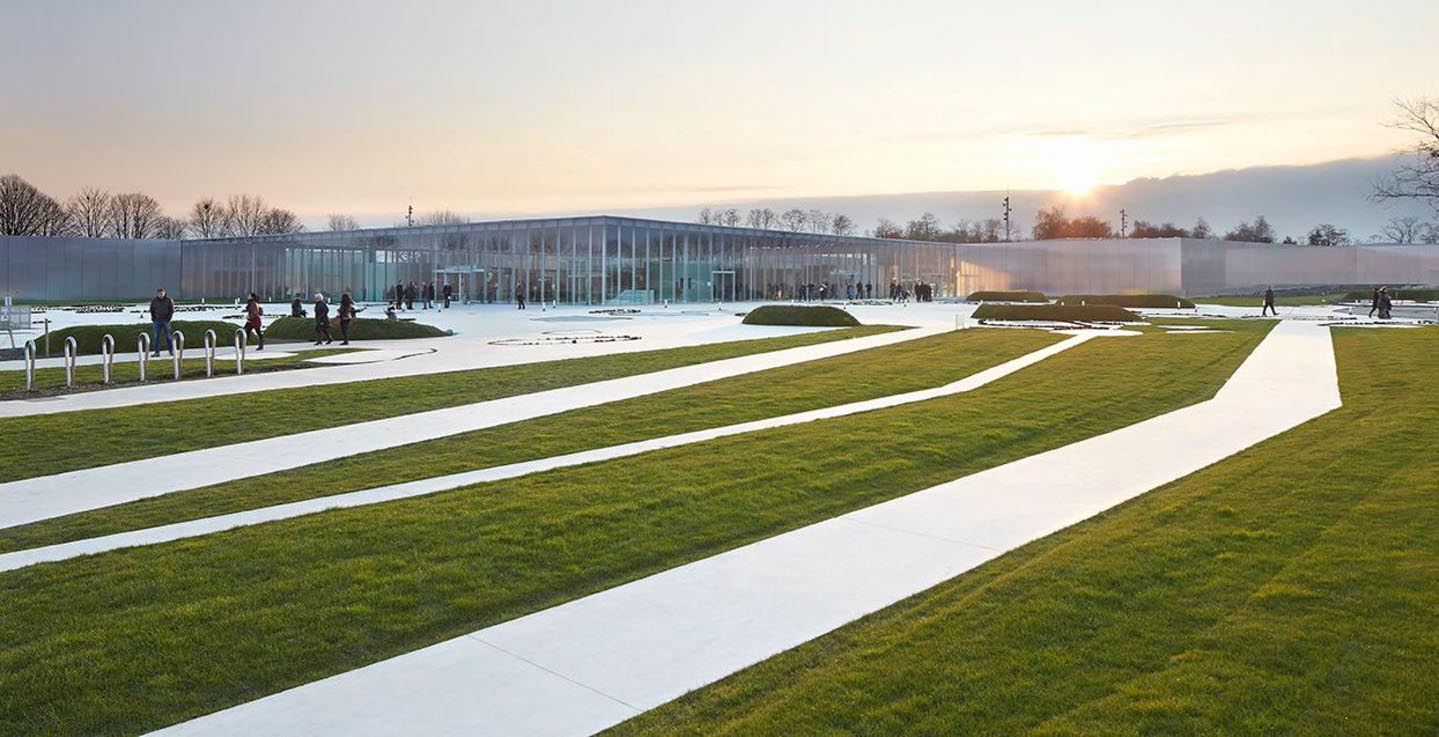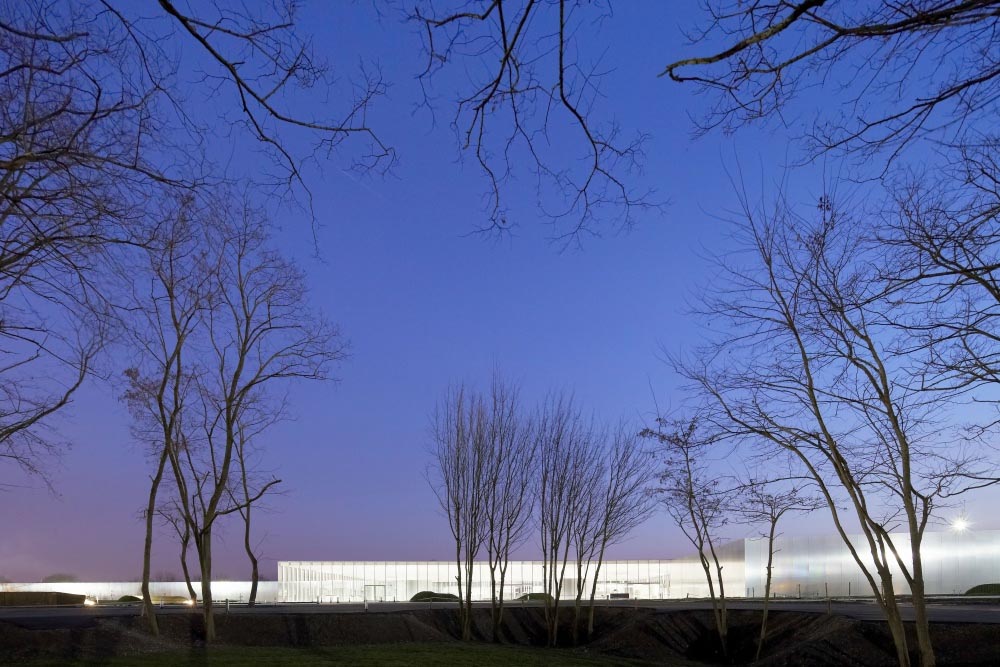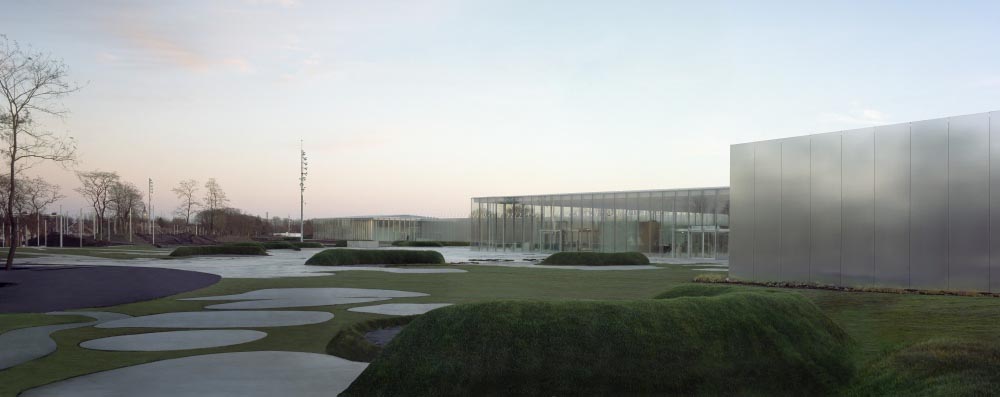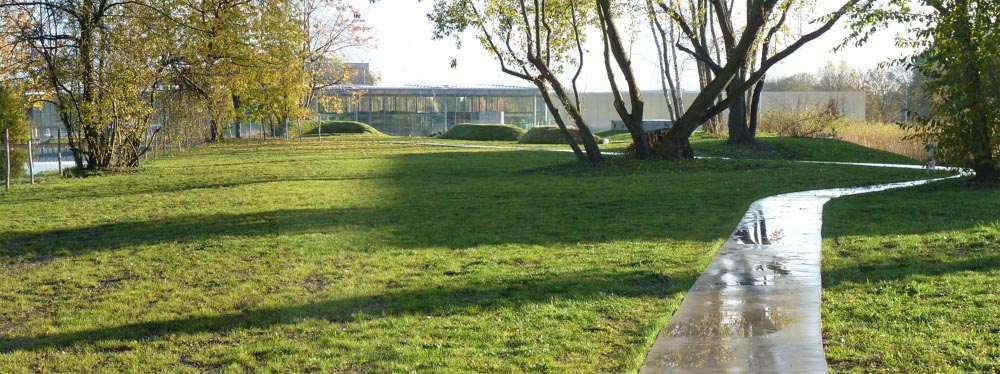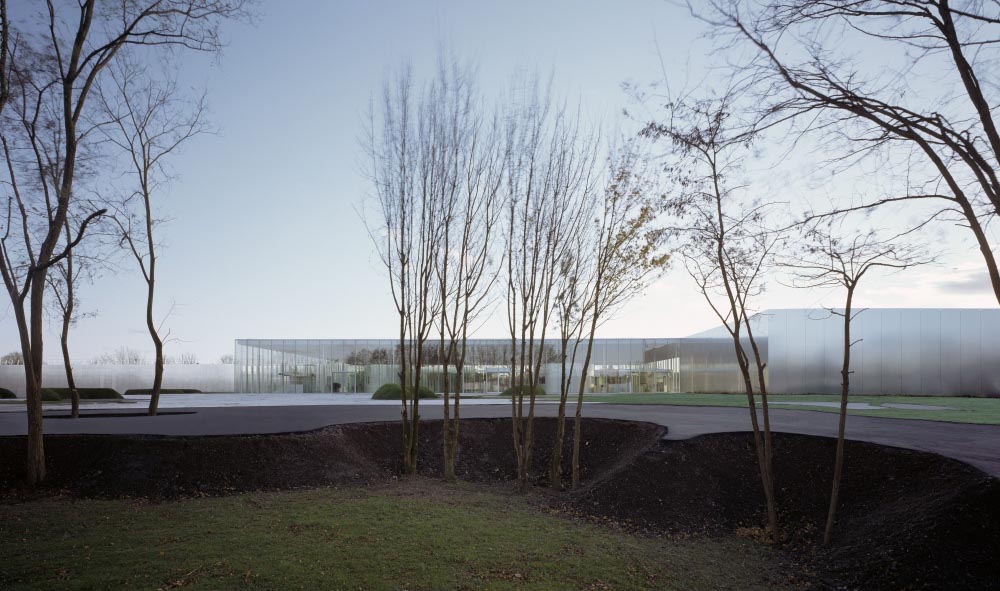Previous state
From the bird’s-eye view, it is not agriculture but the mining industry what, since the mid-nineteenth century, most reveals man’s work on the plain where Lens is located. Nevertheless, the region’s protracted economic decline since the 1960s has left the landscape dotted with abandoned infrastructure and mines which nature is fast reclaiming. Since the 1990s, by which time all mining had ceased, the authorities of the Pas-de-Calais Department in northern France have opted for a reconversion favouring economic activities with more added value, namely the food and automobile industries or the tertiary sector, with special attention to attracting students and tourists.In fact, the zone offers several features which make it particularly attractive. It is a crossroads of major European routes, close to the Belgian and German borders and only an hour away from Paris by the TGV high-speed train or from the entrance to the Eurotunnel which links France and the United Kingdom. The new University of Artois, which has a campus in Lens, is the embodiment of the town’s desire to attract students. The aim of attracting tourists can be found in the agreement signed in 2003 by the regional government and the Louvre Museum, which was inspired by the example of Bilbao. Copying the strategy of the Basque city, which combatted deindustrialisation along its river by means of a project of urban renovation centred on opening a branch of the New York-based Guggenheim Museum, Lens was to have a branch of the Parisian museum. The site chosen for the project was a triangular bock of some twenty hectares on the outskirts of town and surrounded by low-density built-up areas. It had once been a mining zone with several mineshafts and long pit heaps of up to four metres high.
Aim of the intervention
The agreement between the Louvre Museum and the Pas-de-Calais Department was to benefit both parties. First, the new museum was expected to provide exhibition space for part of the extensive art collection which, owing to lack of space, the Louvre was obliged to keep in old underground storerooms which were dangerously exposed to possible flooding of the Seine. Second, the fame of the Parisian museum would put Lens on the French cultural map, would attract visitors from everywhere, and would stimulate the region’s economic recovery.Furthermore, the location of the new museum on the extensive mining site would help to restore the contaminated landscape in being the occasion to open up a new park that would connect the new facility with the residential areas around it. The green space was to be a place of cultural activity in keeping with the museum’s programming but independent of its opening hours – a meeting place for citizens, a space for understanding the region’s industrial past and one that would also perform an educational function with regard to the area’s ecological values.
Description
Opened in December 2012, the new Louvre-Lens Museum is an exhibition centre which, without having its own permanent collection, exhibits some six hundred works on temporary loan from the headquarters in Paris. Its installations include an annex equipped to store works of art in better conditions than in the underground storage spaces in Paris. The building of the new cultural complex consists of several elongated wings spreading out from a central hall and very open to the land around them.Nature, which had begun to colonise the mining site over decades of abandonment, was reinforced with new trees and shrubs. The old mining installations have remained in situ but have been submitted to several operations in order to speed up nature’s takeover. Vertical cuts have been made in the pit heaps in order to define one of the areas. The ground has also been opened up at regular intervals in order to invite moss to cover the squist-filled ground in a green extension, absorbing heavy metals and reducing airborne dust stirred up by winds. Concrete paving around the building has round patches filled with gravel or plants and a network of paths spread out and wind among the pre-existing trees.
Assessment
The opening of the Louvre-Lens Museum has decentralised the appeal of all-powerful Paris towards a peripheral zone that had been seriously affected by deindustrialisation. It is to be hoped that this new emphasis on the tertiary sector will ease the ill-effects of unemployment and deterioration of the post-industrial landscape in the Pas-de-Calais Department. In any case, the park surrounding the new museum is a good first step towards achieving improvements in the territory. The project belongs to a school of landscaping which, when restoring the natural value of a place that has been seriously damaged by human activity, does not merely opt to get rid of all the former elements and dump the rubble and contaminated material in an elsewhere tip. On the contrary, taking an honest, sensible position which respects the past, it undertakes subtle yet strategic action to stimulate nature’s takeover of the affected space.David Bravo
Translation by Julie Wark
[Last update: 18/06/2018]


